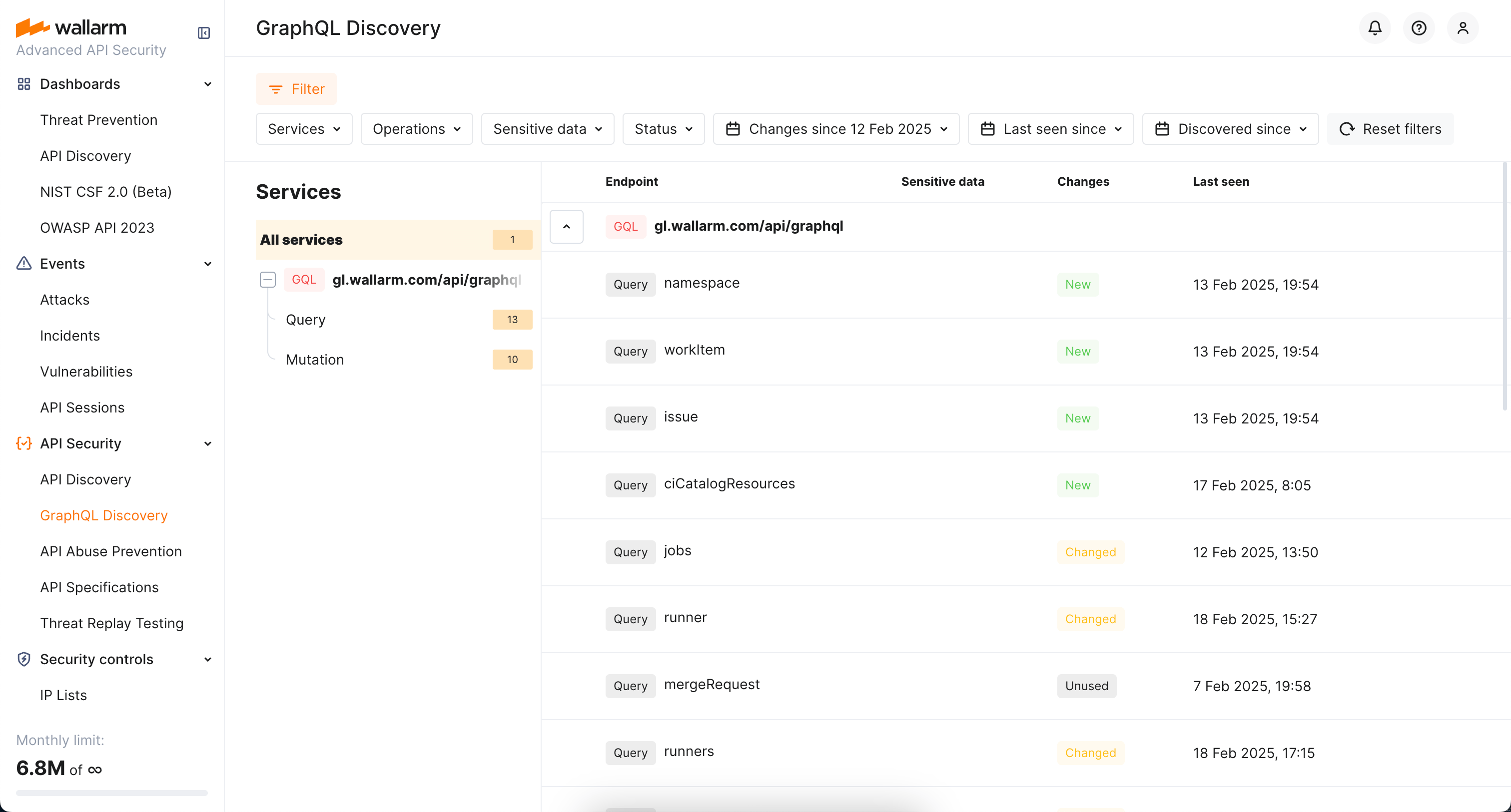GraphQL Discovery Overview¶
Wallarm's GraphQL Discovery builds your application GraphQL API inventory based on the actual API usage. GraphQL Discovery continuously analyzes the real traffic requests and builds the API inventory based on the analysis results.
Requires API Discovery and NGINX node TBD and higher or Native node TBD and higher.
Overview¶
The built GraphQL API inventory includes the following elements:
-
GraphQL services and their API endpoints
-
Endpoints' operations (queries, mutations, subscriptions)
-
For each operation:
- Parameters of requests and responses
- GraphQL schema
Addressed issues¶
Building an actual and complete inventory of GraphQL APIs is the main issue GraphQL Discovery addresses.
Since the GraphQL Discovery uses the real traffic as a data source, it helps to get up-to-date and complete GraphQL API documentation by registering all endpoints that are actually processing the requests.
As you have your GraphQL API inventory discovered by Wallarm, you can:
-
Have a full visibility into the whole GraphQL API estate.
-
Filter GraphQL APIs that consume and carry sensitive data.
-
Position your GraphQL APIs in time:
- Track APIs discovered recently (from today to last 3 months).
- Track when listed APIs were last seen in action
- Track changes in GraphQL API that took place within the selected period.
Sensitive data¶
GraphQL Discovery automatically detects and highlights sensitive data consumed and carried by your GraphQL APIs:
-
Technical data like IP and MAC addresses
-
Login credentials like secret keys and passwords
-
Financial data like bank card numbers
-
Medical data like medical license number
-
Personally identifiable information (PII) like full name, passport number or SSN
Tracking changes¶
If changes occur in your API, GraphQL Discovery updates the built GraphQL API inventory, highlights the changes and gives you information on when and what has changed.
Each time you open the GraphQL Discovery section, the Changes since filter goes to the Last week state, which means the changes occurred within the last week are highlighted. To change the time period, redefine the filter dates.
In the operation list, the following marks highlight the changes in API:
-
New for the operations added to the list within the period.
-
Changed for the operations that have newly discovered request or response parameters or parameters that obtained the
Unusedstatus within the period. In the details of the endpoint such parameters will have a corresponding mark.- A parameter gets the
Newstatus if is is discovered within the period. - A parameter gets the
Unusedstatus if it does not pass any data for 7 days. - If later the parameter in the
Unusedstatus passes data again it will lose theUnusedstatus.
- A parameter gets the
-
Unused for the operations that obtained the
Unusedstatus within the period.- An operation gets the
Unusedstatus if it is not requested (with the code 200 in response) for 7 days. - If later the operation in the
Unusedstatus is requested (with the code 200 in response) again it will lose theUnusedstatus.
- An operation gets the
-
Unchanged means no changes within the period.
Enabling¶
To start using GraphQL Discovery, contact the Wallarm support team.
